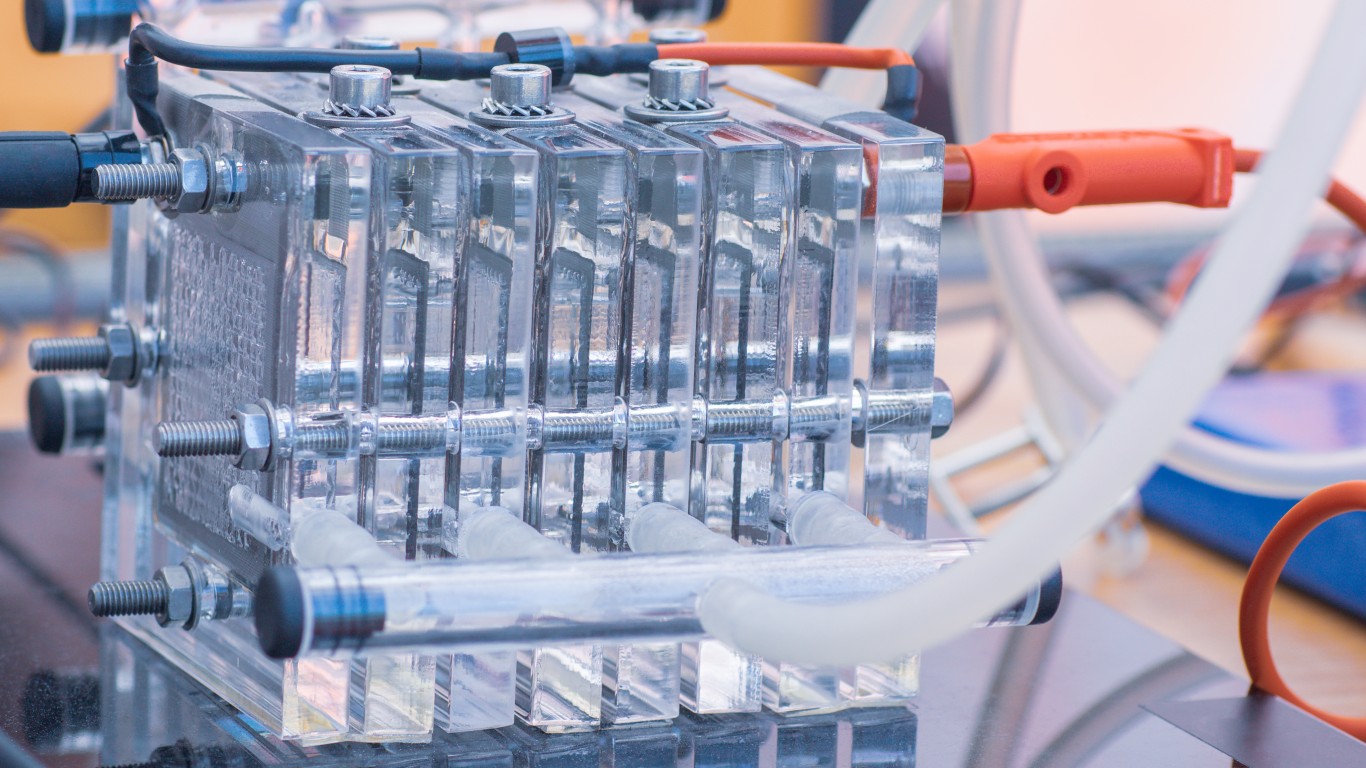Investing
Earnings Previews: United Airlines, Kinder Morgan, Baker Hughes, FuelCell Energy

Published:

Earnings season is heating up, and we’re about to see the difference between one of 2020’s big winners and one of the year’s big losers. The big loser is more than twice as large (by market cap) as the big winner, and both trade at very heavy daily averages.
After markets close on Wednesday, United Airlines Holdings Inc. (NASDAQ: UAL) is scheduled to report fourth-quarter and full-year results for what has been a dismal year for airline stocks. The COVID-19 pandemic has shaved about two-thirds from the carriers’ revenues, and profits have been even a little worse. Air travel did pick up in the fourth quarter, with the Thanksgiving and Christmas holidays accounting for the highest passenger counts since the spring of 2020.
So far in 2021, United’s shares have added about 1%, after dropping by more than 50% last year. Analysts are expecting the airline to post a loss per share of $6.60 for the quarter and a loss per share for the year of $26.77. Revenue for the quarter is expected to drop by 68% to $3.44 billion, and revenue for the full year is estimated to fall by 64% to $15.41 billion.
Energy infrastructure company Kinder Morgan Inc. (NYSE: KMI) also is scheduled to report Wednesday afternoon. The coronavirus-caused drop in demand for refined oil products did not affect the company too much because a majority of its business is natural gas pipelines and its pipeline capacity is mostly filled by take-or-pay contracts that guarantee a steady revenue stream. Still, revenues are down this year. Kinder Morgan has already announced a 3% increase to its dividend for 2021, raising the payout to shareholders to $1.08 per share. To pay for that increase, the company projects capital spending to fall by $680 million year over year.
Analysts expect Kinder Morgan to post earnings per share (EPS) of $0.24 in the fourth quarter and $0.84 for the full-year (down 11.6% year over year). Fourth-quarter revenue is expected to dip by 9.2% year over year to $3.04 billion, while full-year revenue is expected to fall by 12% to $11.57 billion. Based on a current share price of around $15.60, the stock trades at 18.4 times expected 2020 earnings and 17.4 times expected 2021 earnings. The stock has risen nearly 15% in the first few weeks of January after declining by 31% in 2020.
Oilfield services firm Baker Hughes Co. (NYSE: BKR), which reports on Thursday morning, hopes that the global decline in demand for oil has bottomed out and that the new year will see a reversal in the entire energy sector’s performance. Rival Halliburton reported a GAAP net loss of $0.27 per share Tuesday morning but an adjusted profit per share of $0.18. Like virtually every other energy company, Baker Hughes is aiming to increase its operating and profit margins by reducing costs and treading water until demand returns.
Baker Hughes saw its shares drop by more than 15% in 2020, but the stock trades up about 10% so far this year. Analysts have forecast fourth-quarter EPS of $0.16 (down 40% year over year) and full-year EPS of $0.27 (down 68%). Revenues are expected to come in at $5.38 billion (down 15%) for the fourth quarter and $20.53 billion (down 14%) for the year. The company’s stock trades at a multiple of 86.4 to expected 2020 earnings and 39.3 times 2021 earnings.
FuelCell Energy Inc. (NASDAQ: FCEL) was one of 2020’s big winners, and it is not expected to post a profit until at least 2023. That’s what life is like for a company in one of the hottest energy industries around: hydrogen fuel cells. The stock trades an average of 65 million shares a day as investors jostle for position. Just over a month ago, the company issued 40 million new shares, but after an initial dip, the shares have nearly doubled.
FuelCell Energy’s stock rose 345% last year and has added more than 54% so far in 2021. Analysts expect a loss per share of $0.04 in the fourth quarter and $0.38 for the year. Both estimates are sharply better year over year. Quarterly revenue is forecast to rise by 54% to $17 million in the quarter and by 17% to $71 million for the full year. The stock’s 52-week range is $1.00 to $20.94, and the high was posted last Friday.
Let’s face it: If your money is just sitting in a checking account, you’re losing value every single day. With most checking accounts offering little to no interest, the cash you worked so hard to save is gradually being eroded by inflation.
However, by moving that money into a high-yield savings account, you can put your cash to work, growing steadily with little to no effort on your part. In just a few clicks, you can set up a high-yield savings account and start earning interest immediately.
There are plenty of reputable banks and online platforms that offer competitive rates, and many of them come with zero fees and no minimum balance requirements. Click here to see if you’re earning the best possible rate on your money!
Thank you for reading! Have some feedback for us?
Contact the 24/7 Wall St. editorial team.